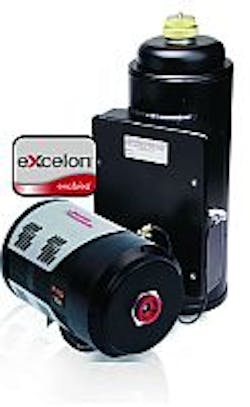Princeton Instruments enhances sensitivity of eXcelon CCD
NEW PRODUCT PRESS RELEASE
eXcelon CCD technology now enhances sensitivity for low-light, NIR imaging and spectroscopy
Princeton Instruments (Trenton, NJ, USA) introduces eXcelon deep-depletion CCDs and cameras for low-light, near-infrared (NIR) imaging and spectroscopy. New eXcelon deep-depletion technology provides improvements over standard deep-depletion technology, including reduced etaloning and higher quantum efficiency (QE) across a broader wavelength range (200 to 1100 nm).
The new CCDs, with 1340 x 100, 1340 x 400, 1024 x 1024, and 1340 x 1300 resolutions, are available in Princeton Instruments PIXIS and Spec-10 deep-cooled, low-noise camera platforms. Suitable for broad UV-NIR detection, new eXcelon deep-depletion technology is also suited to low-light, NIR imaging and spectroscopy applications, including NIR Raman spectroscopy, solar wafer/cell inspection, NIR luminescence, and astronomy.
New eXcelon back-illuminated, deep-depletion CCDs provide excellent photon-detection capabilities across a wider spectrum, from 200 to 1100 nm, and are particularly beneficial for applications requiring enhanced sensitivity in the blue and NIR regions. In addition to delivering peak QE of greater than 95% and as much as a 45% increase over a broader UV-NIR wavelength range, eXcelon deep-depletion sensors offer a further reduction in etaloning.
“Since the joint launch of the first eXcelon sensors by Princeton Instruments, e2v technologies [UK], and Photometrics at Photonics West in January 2010, eXcelon-enabled cameras have received tremendous response from the market, thanks primarily to their ability to overcome the long-standing issue of etaloning [unwanted fringes in the NIR] while boosting sensitivity over a wider wavelength band,” explains Ravi Guntupalli, Product Manager at Princeton Instruments.
The addition of eXcelon deep-depletion technology extends the benefits of eXcelon-enabled cameras to an even wider variety of applications in both the life sciences and physical sciences. Examples include astronomy, Raman spectroscopy, live-cell imaging, confocal imaging, total internal reflection fluorescence (TIRF), Förster resonance energy transfer (FRET), Bose-Einstein condensate (BEC) imaging, solar cell inspection, and super-resolution techniques such as STORM and PALM. The following table provides a summary of various eXcelon sensors and cameras.
SOURCE: Princeton Instruments
-- Posted by Vision Systems Design
